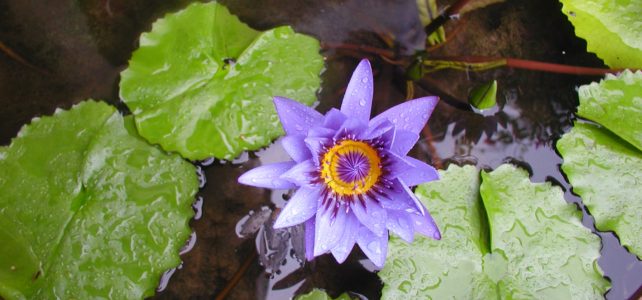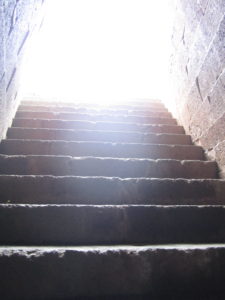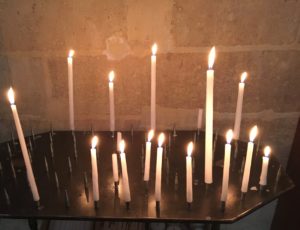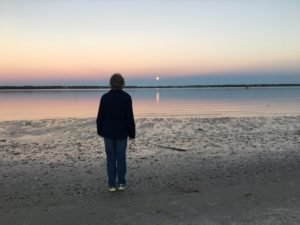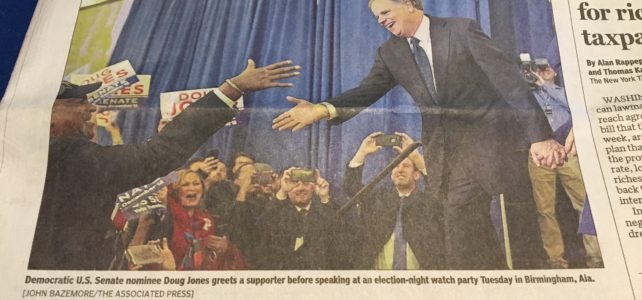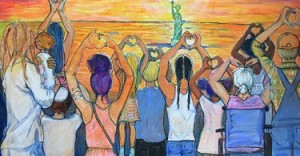
Gaye Reissland acrylic on canvas 26″ x 12″
Painted for the Columbus Crossing Borders Project
Father James Martin, in a Facebook post, calls out all those complicit in the the grossly inhuman treatment of the migrant children being taken from their parents who have crossed the border: “Even then, all those involved in this will have to beg forgiveness from God. Because in the fullness of time, the ones in trouble will not be the migrants. It will be those who sinned against them.”
The Vatican won an international prize for its short video on migrants and refugees from the International Social Advertising Festival or Publifestival awarded its “Best Strategy in Social Action” prize. The video’s poignant images and words remind us of the preciousness of all human life, the potential of every human person, and the imperative to welcome, protect, promote, and integrate (not assimilate!) those who come to us.
But what do we see? Thousands of children separated from their parents. People, adults and children alike, put in fenced “cages” or tent cities while the adults wait for an expedited hearing to learn their fate. All around the world, refugees turned away despite the horrors they are fleeing.
Martin’s and the Vatican’s messages are profound calls to action. But as an ordinary person, not one with political position or money or influence, I increasingly find myself wondering what I can do not only in response to the immigrant/refugee situation, but also in the general climate of deconstruction of policies and initiatives (e.g., eliminating environmental protections and withdrawing from the Paris Climate Agreement) that have slowly guided our country over its relatively short existence toward a more responsible, ethical democracy—as the Preamble of the U.S. Constitution states, “to form a more perfect union.”
I don’t have answers. I pray and try to bring compassion and respect to daily encounters with the people I work with and meet. I call and write my congressional representatives and donate what I can to campaigns. I vote and attend rallies. But these actions seem small.
Some people I know have launched bigger projects, trying to put the issues before the public (Columbus Crossing Borders Project, Through the Checkpoint). One of the project directors lamented, “But it seems like nothing in the face of what’s happening.” What can we do? The answer is different for each one of us. But we must do something.
“If you lose heart, /when adversity comes your strength will only be weakness./ Rescue those being led away to death,/ hold back those who are being dragged to the slaughter./ Will you object, ‘But look, we did not know’?/Has he who weighs the heart no understanding,/ he who scans your soul no knowledge?/ He himself will repay a man as his deeds deserve.” Proverbs 24, 10-12 (The Jerusalem Bible)
Can we find “heart” in the support and example of others? Can we share strength in our communities of faith and love? Can we nurture hope in one another? In the midst of struggle, can we be strong together? Can we raise a chorus of voices that cry out for justice?
We cannot say to God, “Oh, I didn’t know it was this bad.” God knows better. The evidence is everywhere.
“Bad men need nothing more to compass their ends, than that good men should look on and do nothing.” (John Stuart Mill 1867)
It’s nothing new. When we see wrong, we must say something, do something. Jesus spoke truth to power. We are called to do the same.
© 2018 Mary van Balen
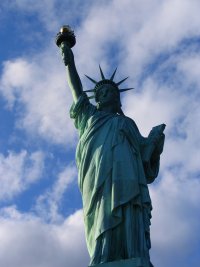
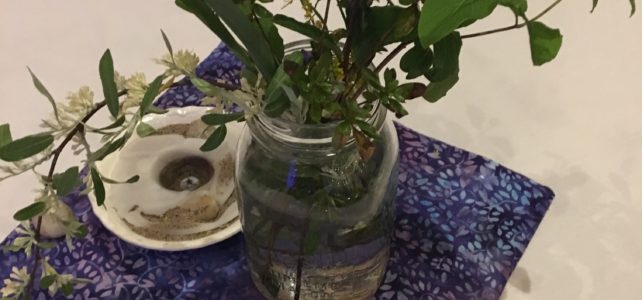
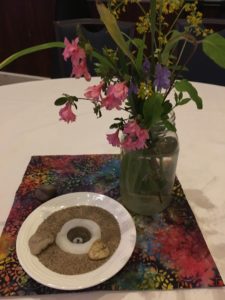
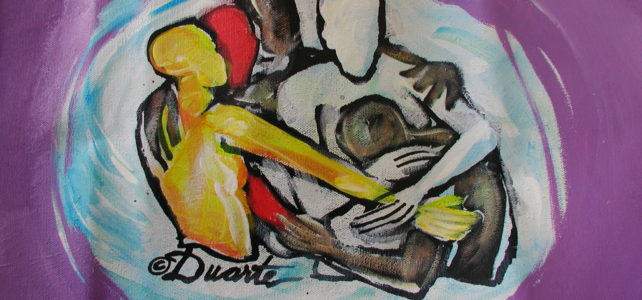
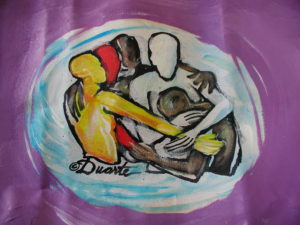
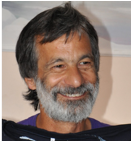
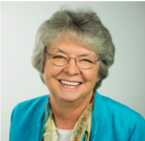 Mary van Balen is the author of four books, numerous articles, and has written the column “Grace in the Moment” for over 31 years. She holds an MA in Theology and was a resident scholar at the Collegeville Institute for Ecumenical & Cultural Research. Mary conducts retreats on topics including journaling and spirituality. She is a spiritual director, having completed the Spiritual Guidance Program at the Shalem Institute. Also an educator, Mary has worked as a classroom teacher, an enrichment consultant, and an adjunct instructor of theology. She has worked with abused women and single mothers in a federally funded poverty program for family literacy.
Mary van Balen is the author of four books, numerous articles, and has written the column “Grace in the Moment” for over 31 years. She holds an MA in Theology and was a resident scholar at the Collegeville Institute for Ecumenical & Cultural Research. Mary conducts retreats on topics including journaling and spirituality. She is a spiritual director, having completed the Spiritual Guidance Program at the Shalem Institute. Also an educator, Mary has worked as a classroom teacher, an enrichment consultant, and an adjunct instructor of theology. She has worked with abused women and single mothers in a federally funded poverty program for family literacy.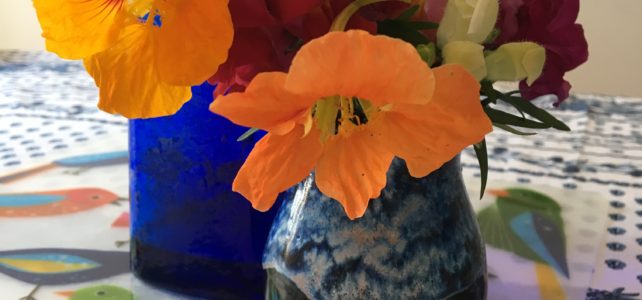
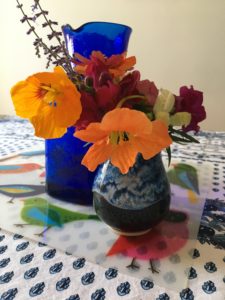
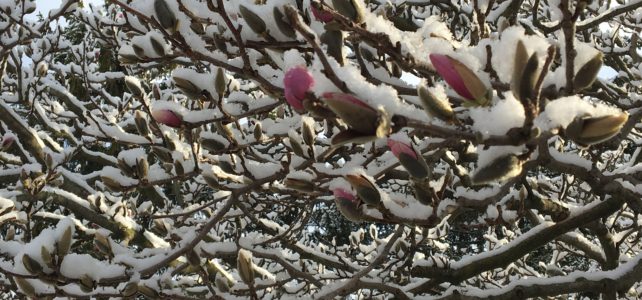
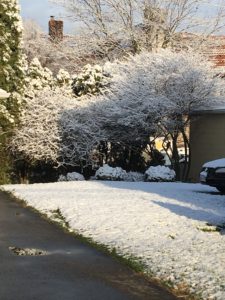 Yes, as the rain and the snow come down from the heavens and do not return without watering the earth,
Yes, as the rain and the snow come down from the heavens and do not return without watering the earth, 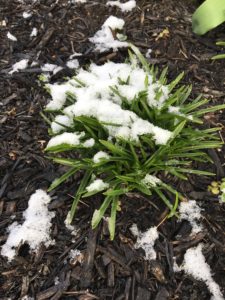
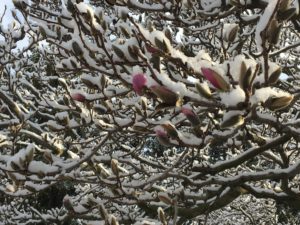 making it yield and giving growth to provide seed for the sower and bread for the eating,
making it yield and giving growth to provide seed for the sower and bread for the eating,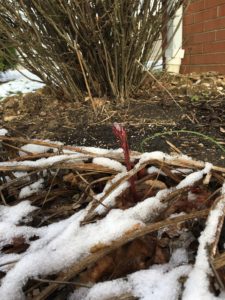
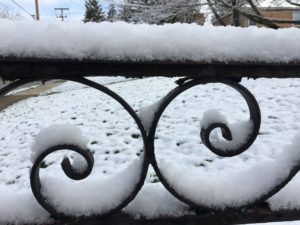
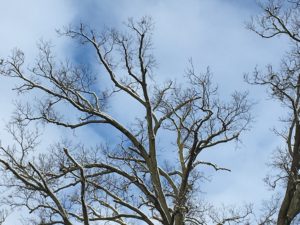 without carrying out my will and succeeding in what it was sent to do. Isaiah 55, 10-11
without carrying out my will and succeeding in what it was sent to do. Isaiah 55, 10-11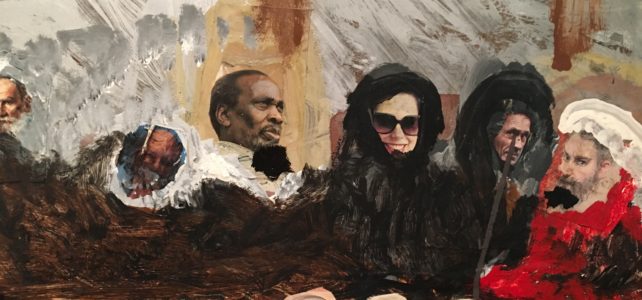
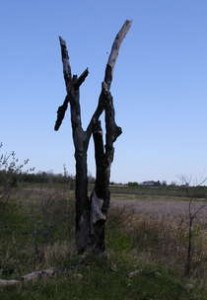
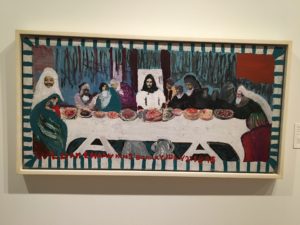
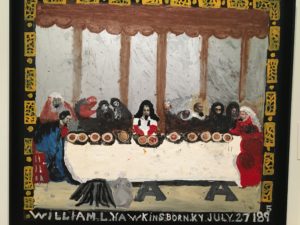
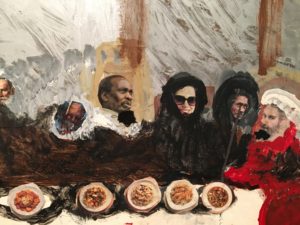
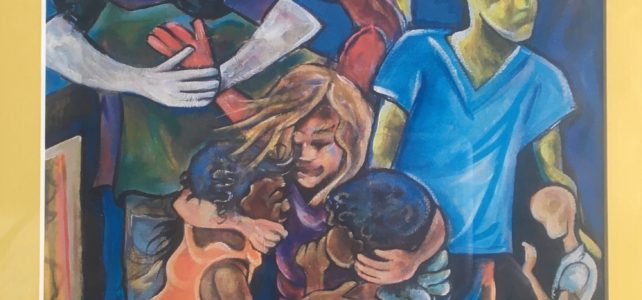
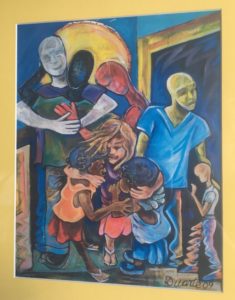
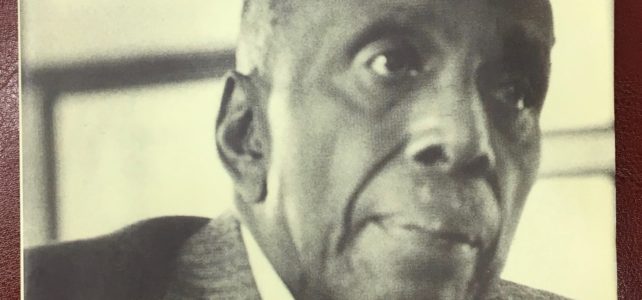
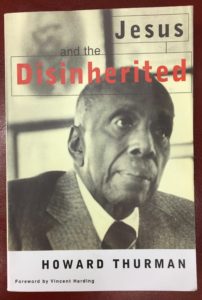 The reading from Mark’s gospel about the Gentile woman’s request for Jesus to heal her daughter possessed by a demon is one of my favorites. Jesus had slipped away from the crowds, but the woman found him and threw herself at his feet, asking for help. When Jesus answered that the children must be fed first (a reference to the Jews) and that it would not be right to throw their food to the dogs, she was undeterred. Her faith was more expansive than that, and she told Jesus so. “Even the dogs under the table eat the children’s scraps.”
The reading from Mark’s gospel about the Gentile woman’s request for Jesus to heal her daughter possessed by a demon is one of my favorites. Jesus had slipped away from the crowds, but the woman found him and threw herself at his feet, asking for help. When Jesus answered that the children must be fed first (a reference to the Jews) and that it would not be right to throw their food to the dogs, she was undeterred. Her faith was more expansive than that, and she told Jesus so. “Even the dogs under the table eat the children’s scraps.”